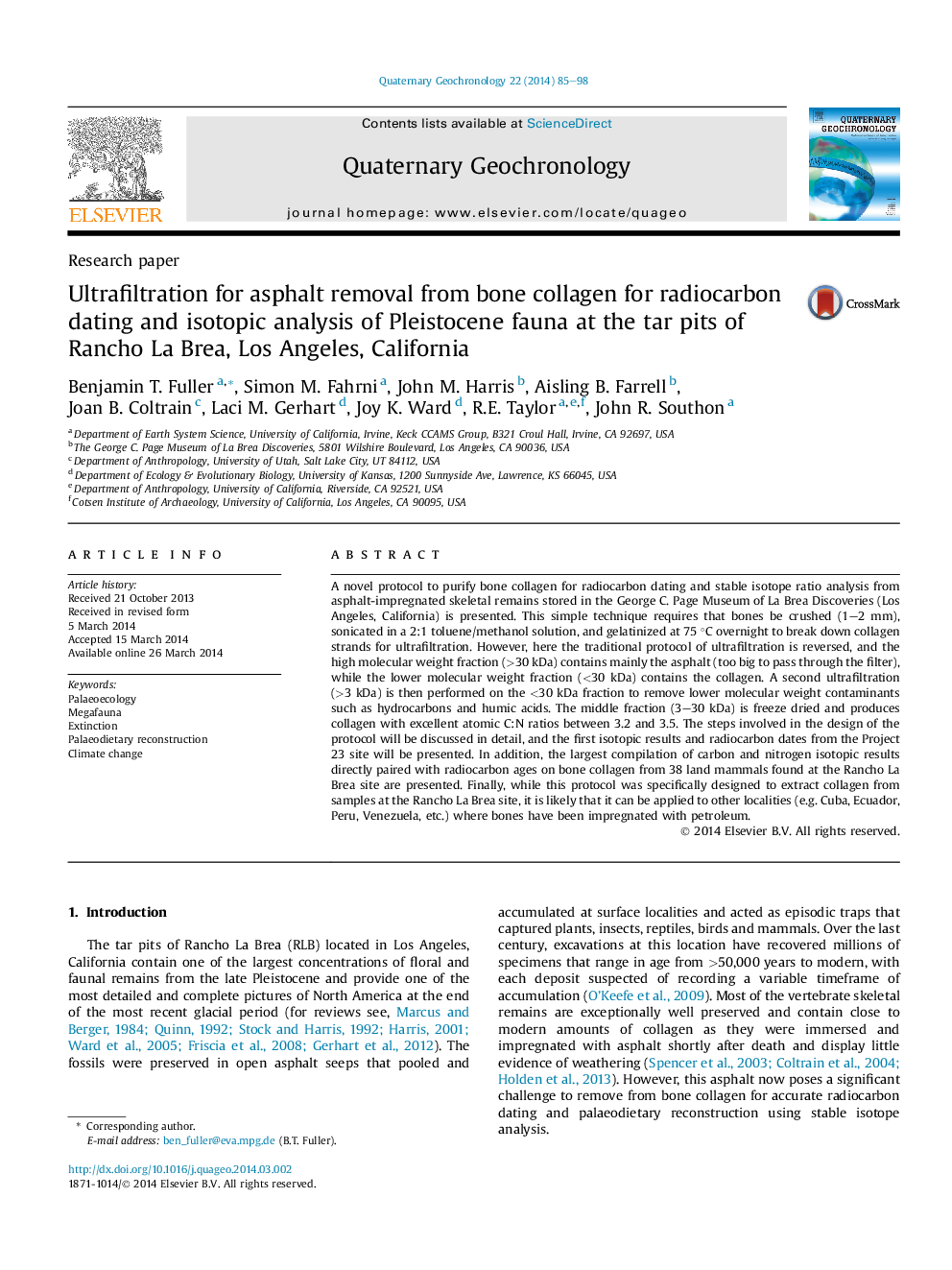| کد مقاله | کد نشریه | سال انتشار | مقاله انگلیسی | نسخه تمام متن |
|---|---|---|---|---|
| 4724963 | 1639854 | 2014 | 14 صفحه PDF | دانلود رایگان |

• Development of new ultrafiltration technique to purify collagen from tar soaked bones at the Rancho La Brea tar pits.
• This technique is easier, faster, and accurate for 14C dating and stable isotope analysis compared to previous methods.
• Largest and most detailed study of 14C dates and stable isotope values from land mammals at Rancho La Brea.
• Discovery of 13C-enriched carnivores older than 40,000 years BP.
• No 14C bone dates are found between ≈16,000–18,500 years BP which included the peak of the Last Glacial Maximum.
A novel protocol to purify bone collagen for radiocarbon dating and stable isotope ratio analysis from asphalt-impregnated skeletal remains stored in the George C. Page Museum of La Brea Discoveries (Los Angeles, California) is presented. This simple technique requires that bones be crushed (1–2 mm), sonicated in a 2:1 toluene/methanol solution, and gelatinized at 75 °C overnight to break down collagen strands for ultrafiltration. However, here the traditional protocol of ultrafiltration is reversed, and the high molecular weight fraction (>30 kDa) contains mainly the asphalt (too big to pass through the filter), while the lower molecular weight fraction (<30 kDa) contains the collagen. A second ultrafiltration (>3 kDa) is then performed on the <30 kDa fraction to remove lower molecular weight contaminants such as hydrocarbons and humic acids. The middle fraction (3–30 kDa) is freeze dried and produces collagen with excellent atomic C:N ratios between 3.2 and 3.5. The steps involved in the design of the protocol will be discussed in detail, and the first isotopic results and radiocarbon dates from the Project 23 site will be presented. In addition, the largest compilation of carbon and nitrogen isotopic results directly paired with radiocarbon ages on bone collagen from 38 land mammals found at the Rancho La Brea site are presented. Finally, while this protocol was specifically designed to extract collagen from samples at the Rancho La Brea site, it is likely that it can be applied to other localities (e.g. Cuba, Ecuador, Peru, Venezuela, etc.) where bones have been impregnated with petroleum.
Journal: Quaternary Geochronology - Volume 22, August 2014, Pages 85–98